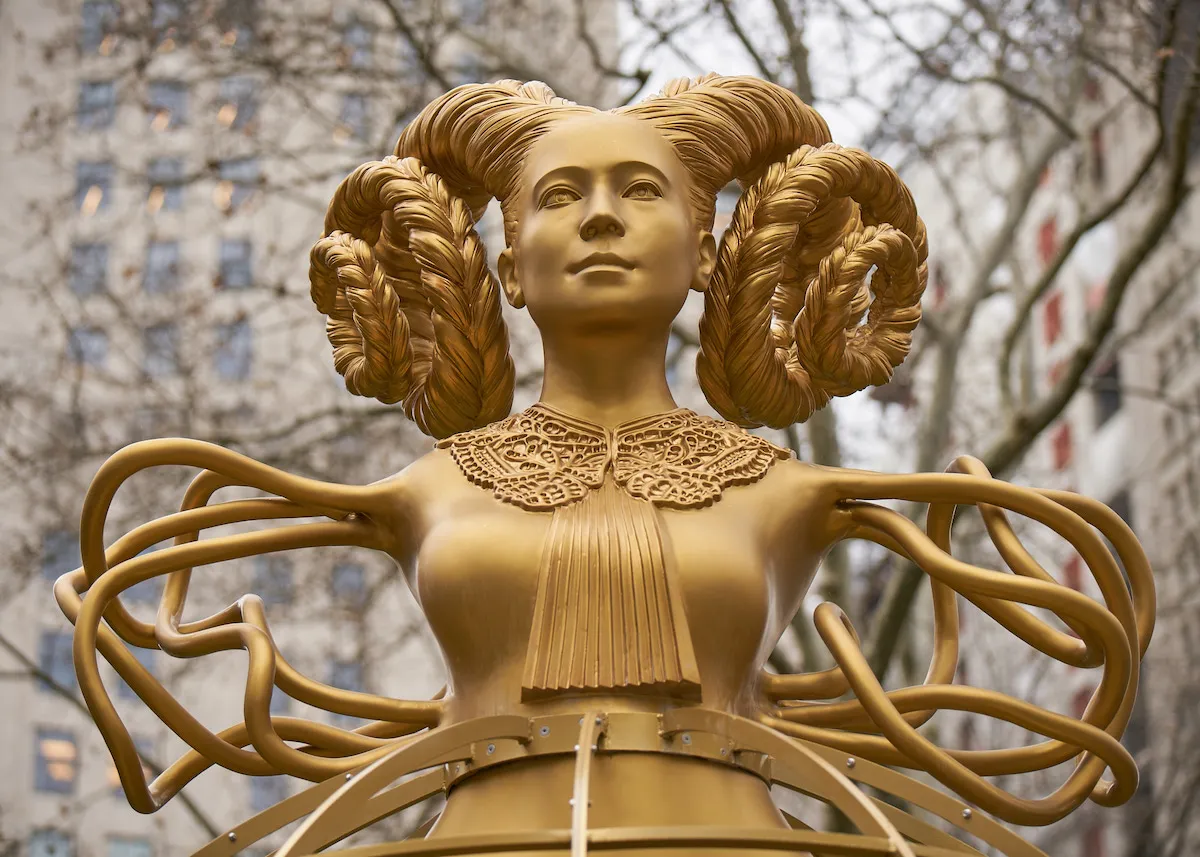Blog
Controversy Erupts Over Shahzia Sikander Sculpture in Texas: Anti-Abortion Group Claims Satanic Imagery
A sculpture by Shahzia Sikander has ignited a fierce debate, with an anti-abortion group in Texas alleging that the artwork contains “satanic” imagery.

The sculpture, titled “Witness” (2023), previously acclaimed during its display in New York’s Madison Square Park, explores the intersection of femininity and power. Depicting a levitating female figure with arms and legs dissolving into rootlike forms, the artwork features intricate mosaics within a hoop skirt, reminiscent of plants, and a lace collar paying homage to the late Supreme Court justice Ruth Bader Ginsburg.
Sikander explained that the piece serves as a response to the erosion of abortion rights in the United States, particularly following the Supreme Court’s 2022 decision in Dobbs v. Jackson Women’s Health Organization, which overturned Roe v. Wade. In her statement, Sikander emphasized the resilience of women in the face of such challenges and aimed to capture their enduring spirit through her sculptures.
Despite its critical acclaim, the sculpture is now slated to appear at the University of Houston in Texas, sparking objections from conservative groups. Texas Right to Life, known for its advocacy against abortion, condemned the artwork, alleging it celebrates abortion and honors Ruth Bader Ginsburg with “satanic imagery.” The group argued that such imagery contradicts timeless values of truth, goodness, and beauty, asserting that art should reflect these values rather than glorify disobedience to God.
This controversy is not new, as conservative media outlets, including Fox News, previously labeled the sculpture as “demonic.” However, the accusations of satanic imagery lack specific evidence, with Sikander’s artist statement making no mention of such themes.
In response to the uproar, the University of Houston addressed concerns about the sculpture’s potentially offensive nature. The university highlighted the significance of the braids shaped like ram horns, symbolizing unity and strength across different cultures and beliefs. Sikander herself explained that the braids represent courage, fluidity, and resilience in femininity, drawing connections to diverse religious and cultural traditions.
The controversy surrounding Sikander’s sculpture adds to a growing list of artworks labeled as “satanic” by right-wing groups, reflecting broader cultural tensions over artistic expression and social values.
